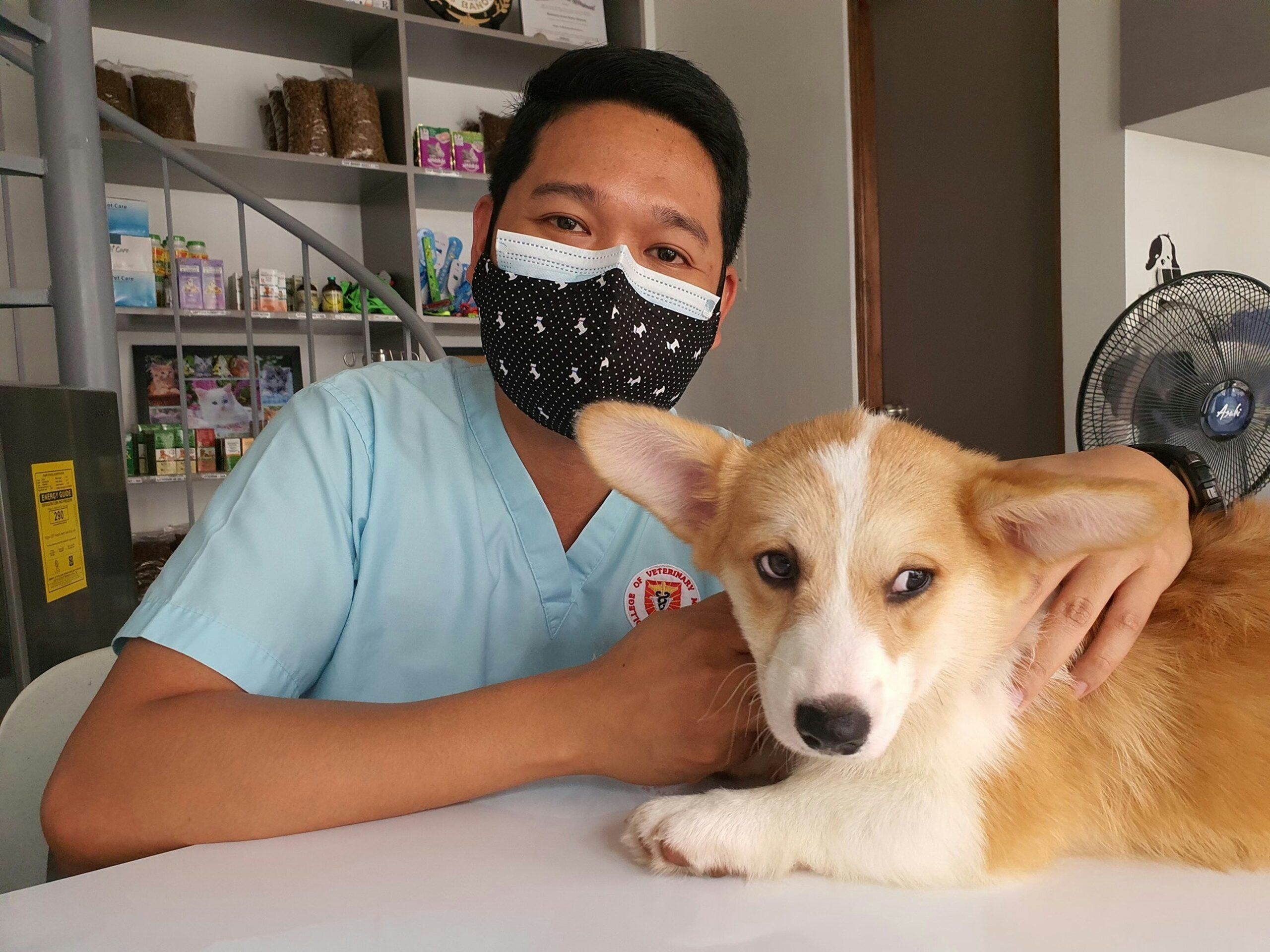Pets are incredibly intuitive when it comes to sensing human emotions, often offering comfort when they detect distress. However, when it comes to their own pain, they are far less expressive. Unlike humans, who can verbally communicate pain, pets instinctively hide discomfort. This can make it challenging for pet owners to recognize when their dog is in pain, suffering from arthritis in older dogs, or dealing with something as simple as a dog’s stomach ache. Understanding the subtle signs of pain in cats and dogs is essential for ensuring their well-being and improving their quality of life.
Why Pets Hide Pain
In the wild, expressing pain can make an animal vulnerable to predators. Even domesticated cats and dogs retain this survival instinct, often masking their discomfort until the pain becomes unbearable. This is particularly true for conditions like osteoarthritis in cats and dog hip arthritis, where gradual discomfort builds over time, leading to changes in behavior rather than immediate vocalization.
Dogs and cats have adapted to pain in different ways. While a dog may yelp from an acute injury or whimper from a dog tummy ache, they will typically adjust to chronic pain, such as arthritis in dogs’ backs, without obvious signs. Similarly, a cat in pain might not cry out but will instead become less active, stop grooming, or hide more often. Recognizing these changes early can prevent prolonged suffering and allow for timely intervention, whether through veterinary care or treatments like Solensia for cat arthritis.
Recognizing Pain in Pets
Because pets are conditioned to conceal pain, pet owners must be observant and proactive in detecting signs of discomfort. Below are some key indicators:
Behavioral Signs of Pain
- Changes in activity levels: A normally playful dog that becomes lethargic or reluctant to move may be experiencing back pain or arthritis. A kitten in pain may stop engaging in normal playful behaviors.
- Hiding or withdrawal: Cats and dogs in pain may seek solitude, avoiding interaction with people and other pets.
- Restlessness or trouble sleeping: Dogs suffering from growing pains or stomach cramps may pace or frequently change resting positions.
- Increased irritability or aggression: Painful conditions like dog inner ear infections or dog tooth pain can make pets more reactive or sensitive to touch.
- Excessive licking, biting, or chewing: Pets may lick or bite at areas of discomfort, such as a dog with anal gland pain constantly licking its hindquarters.
Physical Indicators of Pain
- Changes in posture and movement: Dogs with hip dysplasia may have trouble climbing stairs, while arthritis in older dogs can cause stiffness or difficulty standing.
- Unkempt appearance in cats: Cats suffering from osteoarthritis or Solensia cat arthritis may stop grooming, resulting in a rough or matted coat.
- Facial expressions and body language: Dogs with mouth pain might drool excessively, while cats experiencing discomfort may keep their ears pinned back and eyes half-closed.
- Vocalization changes: Increased whining, yelping, or yowling can indicate pain, though some pets remain silent despite severe discomfort.
- Gastrointestinal distress: A dog with stomach cramps or gas pains may appear bloated, refuse food, or exhibit restlessness. Common signs of a dog tummy ache include frequent stretching or licking their lips.
By recognizing these subtle yet significant signs, pet owners can take proactive steps in managing pain and improving their pet’s overall comfort. In the next sections, we will explore specific types of pain, how to assess pain levels, and the best treatment options available, including veterinary medications and alternative therapies.
How to Assess Pain in Your Pet
Assessing pain in pets can be tricky because they cannot verbally communicate their discomfort. However, with careful observation, you can get a good sense of whether your pet is in pain. Here are some ways to assess pain in your dog or cat:
- Behavioral Observation:
Pay attention to any sudden changes in behavior. Is your dog more withdrawn or seeking isolation? If your dog has gas pains or a stomach ache, they may lie down more than usual or avoid moving. Cats with arthritis or osteoarthritis may stop grooming themselves or become more reclusive. - Physical Sensitivity:
Gently palpate your pet’s body, including their spine, legs, and joints. Dogs with back pain or hip arthritis may flinch or pull away when you touch certain areas. For cats, this might be especially useful if you’re concerned about conditions like dog osteoarthritis or dog back pain. - Changes in Posture or Movement:
Watch for any abnormal posture or limping. Lameness, especially in a dog with hip dysplasia or dog osteoarthritis, is a strong indicator of pain. Cats may appear stiff or reluctant to jump, particularly if they suffer from arthritis in older dogs or dog tooth pain. - Heart Rate and Respiration:
If your pet’s heart rate seems elevated or if they’re panting excessively, they might be in pain. Dogs with stomach cramps or dog stomach ache may pant or experience irregular breathing. You can measure this by checking their pulse or listening to their breathing pattern. - Vocalization:
Watch for unusual vocalizations. If your cat or dog is suddenly meowing loudly or whimpering more often, this could be a sign of pain. Cats may also purr more frequently when stressed, but this doesn’t mean they are not in pain. - Facial Expressions:
Look for signs like a furrowed brow, ears pulled back, or a tense mouth. These facial changes can signal that your pet is uncomfortable, whether it’s from something like dog gas pain or dog mouth pain.
Common Causes of Pain in Pets
Pets can experience pain for a variety of reasons, some acute and others chronic. Here are some common causes of pain in both dogs and cats:
- Injuries and Surgery:
A dog recovering from surgery, such as a hip dysplasia in dogs surgery, may experience pain during their healing process. Similarly, injuries from accidents or fights can lead to fractures or cuts that cause acute pain. - Osteoarthritis in Dogs and Cats:
As pets age, they can develop arthritis in older dogs or osteoarthritis in cats, leading to chronic pain, especially in the joints. This condition is common in larger dog breeds, like those suffering from dog hip arthritis or arthritis in dogs’ back. - Dental Issues:
Dog tooth pain and dog toothaches are common but often go unnoticed. Without regular dental care, dogs can develop periodontal disease, which causes significant pain. Cats, too, can suffer from dental pain, leading to symptoms like drooling, difficulty eating, and bad breath. - Digestive Problems:
Stomach pain in dogs from issues like gas, ulcers, or gastrointestinal diseases is not uncommon. A dog with stomach cramps or an upset stomach may seem restless, refuse food, or exhibit signs of discomfort. - Ear Infections and Other Infections:
Dog inner ear infections or dog anal gland pain can also cause pain in your pet. These conditions often lead to rubbing, shaking of the head, or abnormal behavior. - Growing Pains:
Puppies, especially large breeds, can experience growing pains as they develop. These pains are often temporary but can still cause distress. - Chronic Pain:
As pets age, chronic pain becomes more common. Dog osteoarthritis, dog back pain, and arthritis in older dogs are frequent causes of long-term discomfort.
Treatments and Pain Management Options
Managing pain in pets involves a combination of medications, therapies, and lifestyle changes. There are many options available, and your veterinarian can help you choose the best approach for your pet’s specific needs.
- Medications:
- NSAIDs (Non-Steroidal Anti-Inflammatory Drugs): These are often prescribed to treat conditions like arthritis in dogs or arthritis in older dogs. Medications like meloxicam or carprofen can reduce inflammation and ease pain.
- Opioids and Gabapentin: For more severe pain, your vet may recommend opioids or gabapentin, especially after surgery or for nerve-related pain.
- Acetaminophen (Tylenol) for Dogs and Cats: Acetaminophen cats and dogs and Tylenol can be very dangerous, as pets metabolize this drug differently than humans. Never administer human painkillers without consulting your vet.
- Fentanyl Patch: For severe pain, particularly after surgery, a dog fentanyl patch may be used for controlled pain relief.
- Alternative Therapies:
- Acupuncture: This is becoming a popular treatment for pets with chronic conditions like osteoarthritis in cats or dog hip arthritis.
- CBD for Pets: Approved forms of CBD, such as Ellevet for Solensia dog arthritis, can help alleviate pain in some pets.
- Laser Therapy and Massage: These treatments can help reduce inflammation and improve mobility, especially in pets with back pain or joint issues.
- Cold and Hot Therapy: Cold packs can help reduce inflammation, while warm packs may soothe muscles or ease pain from conditions like dog cramps or dog gas pain.
- Surgical Options:
For more serious conditions like hip dysplasia in dogs surgery or if other treatments don’t provide relief, surgery might be an option. This can help manage chronic pain and improve the pet’s quality of life.
By combining these treatment options, you can help your pet manage their pain effectively and improve their overall comfort. Always consult your veterinarian to develop a pain management plan tailored to your pet’s specific needs.
The Importance of Veterinary Evaluation
When it comes to assessing and managing pain in your pet, a veterinary evaluation is crucial. While there are many signs and symptoms that you can observe at home, only a veterinarian can provide a definitive diagnosis and offer appropriate treatment recommendations.
Pets, especially cats and dogs, may hide their pain for long periods, making it difficult for owners to assess the severity of their discomfort. A veterinarian has the experience and tools necessary to identify underlying causes of pain, such as dog osteoarthritis, dog tooth pain, or cat in pain from conditions like Solensia cat arthritis. With a thorough examination and diagnostic tests, your vet can pinpoint the root cause of your pet’s suffering and suggest the most effective treatment options.
Moreover, certain medications and treatments, like acetaminophen cats or human painkillers, can be toxic to pets. A veterinary evaluation ensures that your pet receives the right medications, in the correct dosage, to safely and effectively manage their pain. Vets also monitor for any side effects or complications that may arise from treatments.
Veterinarians are also key in educating pet owners about managing chronic pain, such as arthritis in older dogs or dog back pain, helping you implement strategies that promote long-term comfort. By regularly consulting with your vet, you can stay informed about your pet’s evolving health needs and adjust their care plan accordingly.
Conclusion
Recognizing and managing pain in pets is an essential part of ensuring their well-being. Whether your pet is suffering from dog stomach cramps, cat in pain, or chronic conditions like osteoarthritis in dogs, it’s important to be vigilant about the signs of discomfort. Through careful observation and a proactive approach, you can identify when your pet is in pain and seek the appropriate care.
Pain management is a multifaceted process that may include medication, alternative therapies, and sometimes surgery. However, the cornerstone of effective pain management for your pet is a veterinary evaluation. With your vet’s guidance, you can choose the best treatment options, monitor your pet’s progress, and make informed decisions that improve their quality of life.
Remember, your pet relies on you to recognize when something is wrong. By staying attuned to their behavior and seeking professional care, you can help them live pain-free and enjoy a comfortable, happy life.






